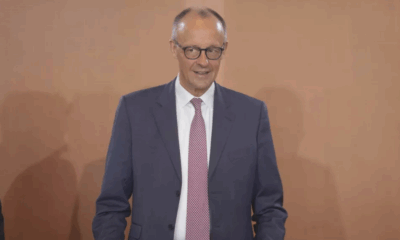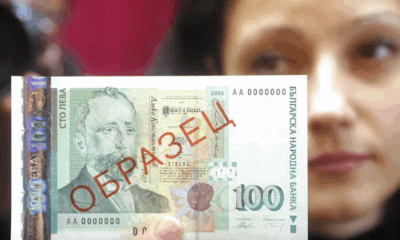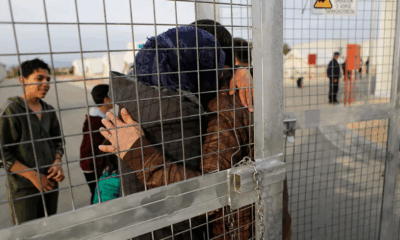News
Europe Forms ‘Coalition of the Willing’ to Support Ukraine Amid Uncertainty Over U.S. Role
European leaders have officially launched the “Coalition of the Willing,” a multinational effort led by the United Kingdom and France to support Ukraine in its ongoing war with Russia. The coalition, formed in response to shifting global diplomacy and concerns over Russia’s expansionist agenda, aims to ensure Ukraine’s sovereignty and prevent further escalation in the region.
A Response to Trump-Putin Negotiations
The formation of the coalition gained urgency following a surprise phone call between former U.S. President Donald Trump and Russian President Vladimir Putin on February 12. The call, which took place without prior consultation with European allies, raised alarms across the continent, prompting European leaders to take a more proactive role in shaping the future of the conflict.
Since then, multiple high-level summits have been held, with French President Emmanuel Macron and UK Prime Minister Keir Starmer spearheading the initiative. “Our goal is clear: to secure peace,” Macron stated. “To do this, we must put Ukraine in the best possible position to negotiate and ensure a lasting peace for all Europeans.”
Who Is Part of the Coalition?
The coalition has grown rapidly, now including 33 delegations from across Europe and beyond. Leaders from Germany, Italy, Spain, Poland, Sweden, and other EU nations have joined, alongside representatives from NATO and the European Commission. Notably, Turkey, Australia, and Canada have also taken part in discussions.
However, some key countries remain absent. Austria and Malta have declined participation due to their neutral status, while Hungary and Slovakia, both NATO members, have resisted military support for Ukraine. The United States has not formally joined the coalition, though European leaders remain hopeful that Washington will provide some form of assistance, particularly in intelligence sharing and air defense.
Key Objectives of the Coalition
The coalition has outlined three main areas of focus:
-
Military Support for Ukraine – European nations have pledged continued military aid, including artillery, air defense systems, drones, and training programs to strengthen Ukraine’s armed forces.
-
Deployment of a ‘Reassurance Force’ – A new security force, composed of Western troops, will be stationed in Ukraine at key locations such as cities, ports, and power plants. The goal is to deter Russian aggression rather than engage in frontline combat. France and the UK have already committed soldiers, with Sweden, Denmark, and Belgium considering participation.
-
Strengthening European Defense Capabilities – The European Commission has proposed an €800 billion investment plan to enhance Europe’s defense industry, with Ukraine set to benefit from these funds.
Uncertainty Over U.S. Involvement
While European leaders have made diplomatic efforts to engage the U.S., there is little clarity on whether Washington will actively support the coalition. Trump’s administration has hinted at reducing American troop presence in Europe, raising concerns about long-term transatlantic security commitments.
Despite this, Starmer remains optimistic. “This is a force designed to deter and send a message to Putin that this peace deal will be defended,” he stated.
Next Steps
The coalition is now working to finalize details of the reassurance force, including troop numbers, locations, and operational structures. Ukrainian President Volodymyr Zelenskyy has invited military representatives to Kyiv to begin planning, with a follow-up summit expected in the coming weeks.
With Europe taking the lead, the coalition marks a significant shift in the West’s approach to the war, signaling that European nations are prepared to act independently if necessary to safeguard Ukraine’s future.
News
Two Dead, Nearly 200 Injured as PSG Title Celebrations Turn Violent Across France

What began as jubilant celebrations of Paris Saint-Germain’s historic UEFA Champions League victory ended in violence and tragedy in parts of France, with two people killed and nearly 200 injured during street festivities that spiraled out of control.
Authorities confirmed on Sunday that a 17-year-old boy was fatally stabbed in the southwestern town of Dax during a PSG street gathering, while in Paris, a man died after his scooter was struck by a car amid the crowded celebrations. Both incidents are currently under investigation.
The unrest followed PSG’s dramatic win in Munich, where the club secured its first-ever Champions League title, marking a milestone in French football history. While fans across the country took to the streets to celebrate, several areas descended into violence.
According to the French Interior Ministry, a total of 294 people were arrested nationwide as of 2 a.m. Sunday. Of the nearly 200 injured, 21 were police officers—18 of them in Paris alone. One officer remains in a medically induced coma after being struck in the face by a firework.
Interior Minister Bruno Retailleau condemned the violence in a statement on social media. “True PSG fans are celebrating a magnificent achievement. Meanwhile, barbarians have taken to the streets to commit crimes and provoke law enforcement,” he said. “It is unacceptable that people cannot celebrate without being endangered by a violent minority.”
Despite the unrest, the majority of gatherings were peaceful, authorities noted, with large crowds celebrating the historic win in cities including Marseille, Lyon, and Lille.
The PSG squad returned to Paris from Munich on Sunday afternoon aboard a Qatar Airways charter flight, arriving at 4 p.m. The team is expected to continue celebrations in the capital with tens of thousands of fans, under heightened security measures.
The violent turn of events has reignited debate in France over crowd control during major sporting celebrations, and how best to ensure public safety without dampening national enthusiasm.
PSG’s Champions League triumph marks a defining moment for the club, which has long pursued European glory. As the team prepares for a hero’s welcome, officials are urging fans to celebrate responsibly and respect public safety.
News
Ukraine Launches Major Drone Assault on Russian Airfields, Hits Over 40 Strategic Bombers

Ukraine’s Security Service (SBU) has claimed responsibility for a large-scale drone strike on four Russian air bases over the weekend, targeting dozens of strategic bombers across vast swaths of Russian territory — from Siberia to the Arctic.
According to Ukrainian officials, the operation, codenamed “Spiderweb” (Pavutyna), was launched on June 1 and struck 41 long-range bombers stationed at airfields in Russia’s Ryazan, Ivanovo, Irkutsk, and Murmansk regions. The attack is being hailed by Kyiv as one of its most ambitious and far-reaching strikes since the beginning of Russia’s full-scale invasion.
“Enemy strategic bombers are burning en masse in Russia,” a senior SBU official said, noting that the operation was specifically designed to cripple Moscow’s airstrike capabilities. “This is a large-scale special operation aimed at destroying enemy bomber aircraft.”
The four airfields targeted were Dyagilevo in the Ryazan region, Ivanovo in central Russia, Belaya air base in Irkutsk — over 4,000 kilometers from the front lines — and Olenya air base on the Kola Peninsula near the Arctic, roughly 2,000 kilometers from Ukraine’s border.
Ukrainian officials described the complex logistics of the operation, which involved covertly transporting drones deep into Russian territory, hiding them until the time of launch, and remotely executing the strikes. While specific details remain classified, Ukraine previously revealed it had developed drones with a flight range of up to 3,000 kilometers, enabling long-range operations like this.
Satellite imagery analyzed after the attack shows the presence of several high-value Russian aircraft types at the affected bases, including the Tu-95, Tu-22M3, Tu-160, and A-50 radar planes. These aircraft have been central to Russia’s long-range missile campaign against Ukraine.
The Tu-22M3, for example, is capable of carrying Kh-22 and Kh-32 cruise missiles at speeds exceeding Mach 4. The Tu-95, a Cold War-era bomber once designed to carry nuclear weapons, has been retrofitted to launch conventional cruise missiles. The A-50 aircraft provides airborne radar surveillance and target coordination for Russian forces.
The scale of the strike underscores Ukraine’s growing long-range capabilities and signals a shift in Kyiv’s strategy to disrupt Russian air operations at their source. President Volodymyr Zelenskyy said he had held meetings with the Ministries of Defense and Foreign Affairs, along with the General Staff and SBU, to coordinate further defense and counter-offensive planning.
There has been no immediate official response from Moscow regarding the extent of damage caused.
News
German Chancellor Merz to Meet President Trump in Washington Amid Global Tensions
-

 Business1 year ago
Business1 year agoSaudi Arabia’s Model for Sustainable Aviation Practices
-

 Business1 year ago
Business1 year agoRecent Developments in Small Business Taxes
-

 Politics1 year ago
Politics1 year agoWho was Ebrahim Raisi and his status in Iranian Politics?
-

 Business11 months ago
Business11 months agoCarrectly: Revolutionizing Car Care in Chicago
-

 Business11 months ago
Business11 months agoSaudi Arabia: Foreign Direct Investment Rises by 5.6% in Q1
-

 Technology1 year ago
Technology1 year agoComparing Apple Vision Pro and Meta Quest 3
-

 Politics1 year ago
Politics1 year agoIndonesia and Malaysia Call for Israel’s Compliance with ICJ Ruling on Gaza Offensive
-

 Sports10 months ago
Sports10 months agoKeely Hodgkinson Wins Britain’s First Athletics Gold at Paris Olympics in 800m






























